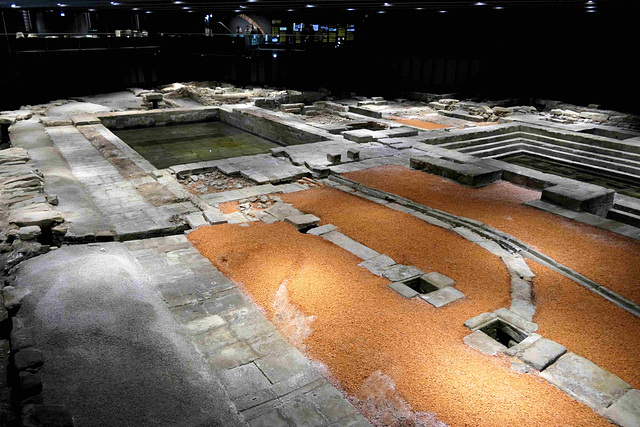Chaves - Câmara Municipal
Chaves - Museu da Região Flaviense
Chaves - Museu da Região Flaviense
Chaves - Museu da Região Flaviense
Chaves - Museu da Região Flaviense
Chaves
Chaves - São João de Deus
Chaves - São João de Deus
Chaves - São João de Deus
Monterrei - Santa María de Mixós
San Tomé de Morgade
San Tomé de Morgade
San Tomé de Morgade
Trandeiras - Mosteiro do Bon Xesús
Pedra Alta de Antela
Santuario de Nuestra Señora de los Milagros
Santuario de Nuestra Señora de los Milagros
Santuario de Nuestra Señora de los Milagros
Santa María de Xunqueira de Espadañedo
Santa María de Xunqueira de Espadañedo
Santa María de Xunqueira de Espadañedo
Santa María de Xunqueira de Espadañedo
Santa María de Xunqueira de Espadañedo
Chaves - Roman Baths Aquae Flaviae
Chaves - Santa Maria Maior
Chaves - Santa Maria Maior
Chaves - Santa Maria Maior
Chaves - Santa Maria Maior
Chaves - Santa Maria Maior
Chaves - Castelo de Chaves
Chaves - Museu de Arte Contemporânea Nadir Afonso
Chaves - Museu de Arte Contemporânea Nadir Afonso
Chaves - Museu de Arte Contemporânea Nadir Afonso
Chaves - Museu de Arte Contemporânea Nadir Afonso
Chaves
Chaves - Ponte de Trajano
Chaves - Ponte de Trajano
Chaves - Lavanderia
Barrosão
Barrosão
Pedra d'Anta
Pedra d'Anta
Santuário de Panóias
Santuário de Panóias
Santuário de Panóias
Location
Lat, Lng:
You can copy the above to your favourite mapping app.
Address: unknown
You can copy the above to your favourite mapping app.
Address: unknown
See also...
Keywords
Authorizations, license
-
Visible by: Everyone -
All rights reserved
-
55 visits
Chaves - Roman Baths Aquae Flaviae


People have lived in this area since the Neolithic period, but it has been continuously inhabited since the conquest by Roman legions, who established an outpost and took over the existing castros in the area. It developed into a military centre known for its baths. The Romans built defensive walls, spanned the river with a bridge, and exploited the local mines. The importance of the town led to it being elevated to the status of a city in 79 AD, during the reign of the first Flavian Caesar, which was also reflected in its name, Aquae Flaviae.
Rome's hegemony lasted until the 3rd century, when, successively, the Suebi and Visigoths as well as the Alani colonized the settlements of Chaves. The area surrendered to Islamic forces at around 714-716. The city was conquered by Alfonso I of Asturias in 773 and repopulated in 868 by Alfonso III of Asturias. Battles between Christian and Muslim forces then continued until the 11th century, when Alfonso V of León permanently reconquered Coimbra, establishing a firm buffer-zone to the south. He reconstructed, settled and encircled the settlement of Chaves with walls, in addition to establishing a Jewish quarter in the community. It was in the reign of Afonso I of Portugal that it was taken from León and firmly integrated into the Kingdom of Portugal domain (1160). Owing to its geographic location King Denis, ordered the construction of a castle to protect the kingdom's border.
Considered today as the largest Roman spa on the Iberian Peninsula, the baths once covered about one fifth of the urban area. Excavations have begun to uncover the remains different baths structure, one of them associated with a hot thermal spring. The complex seen here was of therapeutic character. A violent earthquake at the end of the 4th century caused the collapse of the structure. Forgotten for almost two thousand years, it stands out above all for the constructions in terms of their dimensions and architectural quality, as well as for the good state of conservation.
Rome's hegemony lasted until the 3rd century, when, successively, the Suebi and Visigoths as well as the Alani colonized the settlements of Chaves. The area surrendered to Islamic forces at around 714-716. The city was conquered by Alfonso I of Asturias in 773 and repopulated in 868 by Alfonso III of Asturias. Battles between Christian and Muslim forces then continued until the 11th century, when Alfonso V of León permanently reconquered Coimbra, establishing a firm buffer-zone to the south. He reconstructed, settled and encircled the settlement of Chaves with walls, in addition to establishing a Jewish quarter in the community. It was in the reign of Afonso I of Portugal that it was taken from León and firmly integrated into the Kingdom of Portugal domain (1160). Owing to its geographic location King Denis, ordered the construction of a castle to protect the kingdom's border.
Considered today as the largest Roman spa on the Iberian Peninsula, the baths once covered about one fifth of the urban area. Excavations have begun to uncover the remains different baths structure, one of them associated with a hot thermal spring. The complex seen here was of therapeutic character. A violent earthquake at the end of the 4th century caused the collapse of the structure. Forgotten for almost two thousand years, it stands out above all for the constructions in terms of their dimensions and architectural quality, as well as for the good state of conservation.
- Keyboard shortcuts:
Jump to top
RSS feed- Latest comments - Subscribe to the comment feeds of this photo
- ipernity © 2007-2025
- Help & Contact
|
Club news
|
About ipernity
|
History |
ipernity Club & Prices |
Guide of good conduct
Donate | Group guidelines | Privacy policy | Terms of use | Statutes | In memoria -
Facebook
Twitter

Sign-in to write a comment.